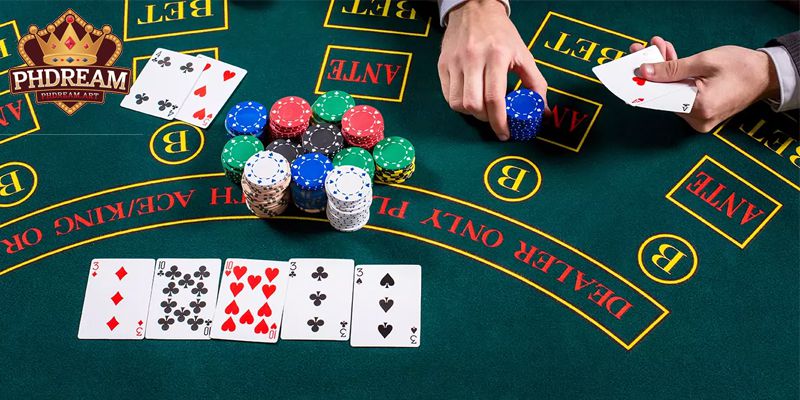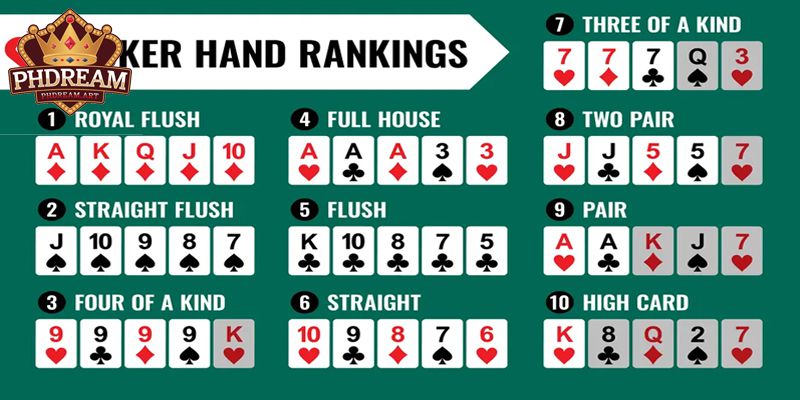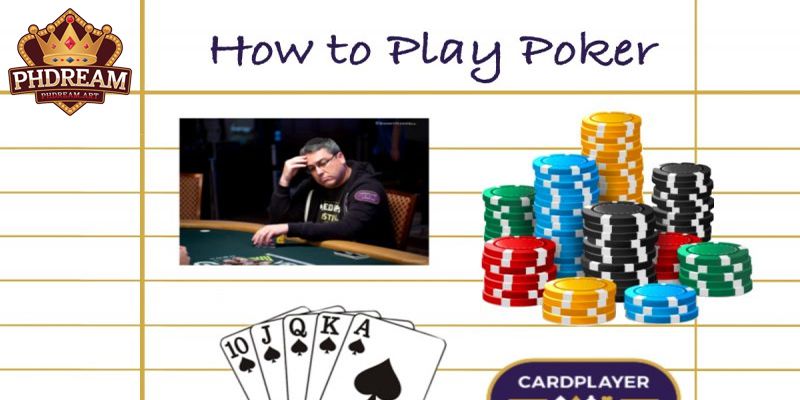Poker is an incredibly captivating card game that attracts players every day due to the combination of strategy and luck. Here, you can participate in multiple betting rounds, along with the opportunity to win huge rewards every day.
Concept of the Poker Game
Poker is a card game played all over the world, and you’ll find it in many different styles. At its core, players have to decide whether to call (match a bet), raise (increase it), or fold (give up their hand). It really took off in North America, where it’s still incredibly popular.
You can find poker games happening pretty much everywhere now: in homes, dedicated poker rooms, casinos, and of course, online. It’s often called the national card game of the United States, and its unique lingo and culture have truly woven themselves into American society.

The Fundamentals of Poker
Even with all the different ways to play, all poker variations share some basic elements. A standard poker hand uses five cards, and its strength is determined by how rare that specific combination is – the tougher it is to get, the higher its rank.
Players place their bets because they believe their hand is the strongest, and then their opponents have to decide whether to match that bet or fold. Bluffing is a huge part of the strategy, too. A player might bet big even with a weak hand, and if others don’t call their bluff, they could still win the pot!
Understanding the Rules of Poker
To become an experienced player when participating in poker at PHDREAM, members must adhere to the rules of the game:
Basic Rules of the poker Game
Poker is truly a game of skill and strategy where players bet based on how strong their hand is. The goal? Either have the best hand when all the cards are shown, or convince everyone else to fold their hands. You play with a standard 52-card deck, aiming to win chips or money by simply outsmarting other players. The game’s structure is built on things like blinds, a dealer button, and multiple betting rounds, all designed to keep things fair and moving at a good pace.

Exploring the Essence of Poker
Objective: Your main aim is to win chips by taking down pots. You do this either by having the highest-ranked hand at the very end when all cards are revealed, or by getting all your opponents to fold before anyone shows their cards.
Key Components:
- Dealer Button: This is a marker that shows who the nominal dealer is for each hand. It moves clockwise after every round, making sure everyone gets a turn in each position.
- Blinds: These are mandatory bets placed by the two players immediately to the left of the dealer button. They kick off the betting action in each hand.
- Betting Rounds: Throughout the game, there are multiple rounds where players can check (choose not to bet if no bet has been made), call (match an existing bet), raise (increase the current bet), or fold (give up their hand and exit the round).
Hand Formation and Ranking:
- Texas Hold’em: In this popular version, each player gets two private “hole cards.” Then, five community cards are dealt face-up on the table for everyone to use.
- Best 5-Card Hand: Players combine their two hole cards with any of the five community cards to create the strongest possible five-card poker hand.
- Hand Rankings: Standard poker hierarchy applies – a pair beats a high card, two pairs beat one pair, and so on. There are detailed charts available (like on PokerNews, for example) that show the full breakdown of all hand rankings.
Dealing and Game Flow:
- Deal: The dealer shuffles the cards and gives them out face down to players, moving clockwise around the table.
- Betting: After each betting round, more community cards are revealed incrementally, influencing how players choose to bet.
- Showdown: Once the final betting round is done, any remaining active players show their hands to see who wins.
Winning and Variations
Winning the Game: The player with the absolute best hand at the showdown wins the pot. Alternatively, if everyone else folds before the showdown, the last player remaining automatically claims the pot.
Variations: While Texas Hold’em is by far the most popular, there are many other great poker variants out there, like Five-Card Draw, Stud Poker, and Omaha. Some versions, like Hi-Lo, even split the pot between the highest and lowest hands, adding an extra layer of complexity to the game.
Common Hands in Poker
Understanding the common hands in poker will help players assess their chances of winning. The hands are ranked from highest to lowest as follows:

- Royal Flush: This is the highest-ranking hand, but it is rare in poker. It consists of five cards in sequence (10, J, Q, K) of the same suit.
- Straight Flush: This hand consists of five cards of the same suit in sequential order.
- Four of a Kind: A hand with four cards of the same rank.
- Full House: This is a combination of three cards of the same rank and a pair.
- Flush: Five cards of the same suit, but not in sequence.
- Straight: Five consecutive cards, but not of the same suit in poker.
- Three of a Kind: Three cards of the same rank, plus two unrelated cards.
How to Bet in Poker
In every poker hand, you’ll go through one or more betting rounds, depending on the specific game you’re playing. During each of these rounds, a designated player (based on the game’s rules) has the right or even the obligation to make the first wager.
This player, and then everyone else in turn, has to put chips into the pot – representing real money – in an amount that at least matches the total bet made by the player before them. When someone matches the required bet, they’re considered “in the pot” or an active participant. If a player decides not to match the bet, they simply fold, discarding their hand and giving up any chance to win that pot.

Before any cards are even dealt, players might need to place a mandatory bet called an ante. In any given betting round, the first player to put chips into the pot is said to “bet.” Those who then match that amount “call,” while anyone who puts in more chips than the previous bet is said to “raise.”
Some poker games let players “check,” which means they stay in the hand without betting anything – but you can only do this if no one else has placed a bet yet in that betting interval. Since you can’t raise your own bet, a betting round wraps up when the action gets back to the last player who raised, or when all remaining players have simply checked.
After all the betting rounds (except for the very last one), the dealer keeps dealing out cards. Once that final betting round ends, the remaining active players show their hands in what’s called the “showdown,” and the person with the strongest hand takes the entire pot!
How to Play Poker (Simple Guide)
Each poker game typically involves 2 to 8 players, with each player receiving 2 private cards and 5 community cards. The game consists of 5 rounds, where players draw a card in each round to form strategies based on their hand.

In Round 1, the two players to the left of the dealer must place a bet. The next players have the option to either call (match the current bet) or take other actions depending on the strength of their cards.
Once all players have completed their bets in the first round, the system will reveal the first 3 community cards, marking the beginning of Round 2. After seeing these 3 cards, players need to carefully assess the probability of winning or losing and choose an appropriate strategy.
After all players have completed their moves in Round 2, Round 3 begins. The dealer will reveal the 4th community card, giving players more information to assess the strength of their hand.
In Round 4, the dealer reveals the 5th and final community card. By this point, players know whether their hand is strong or weak and can decide on their final move.
In Round 5, any players who have folded are out of the game. The remaining players compare their hands, and the player with the highest-ranking hand wins the game.
Poker is a game that requires strategy and the player’s sharpness. It is suitable for those who want to challenge themselves in thrilling and exciting rounds of play. I hope the information above provides useful insights and a solid foundation for your betting decisions.

